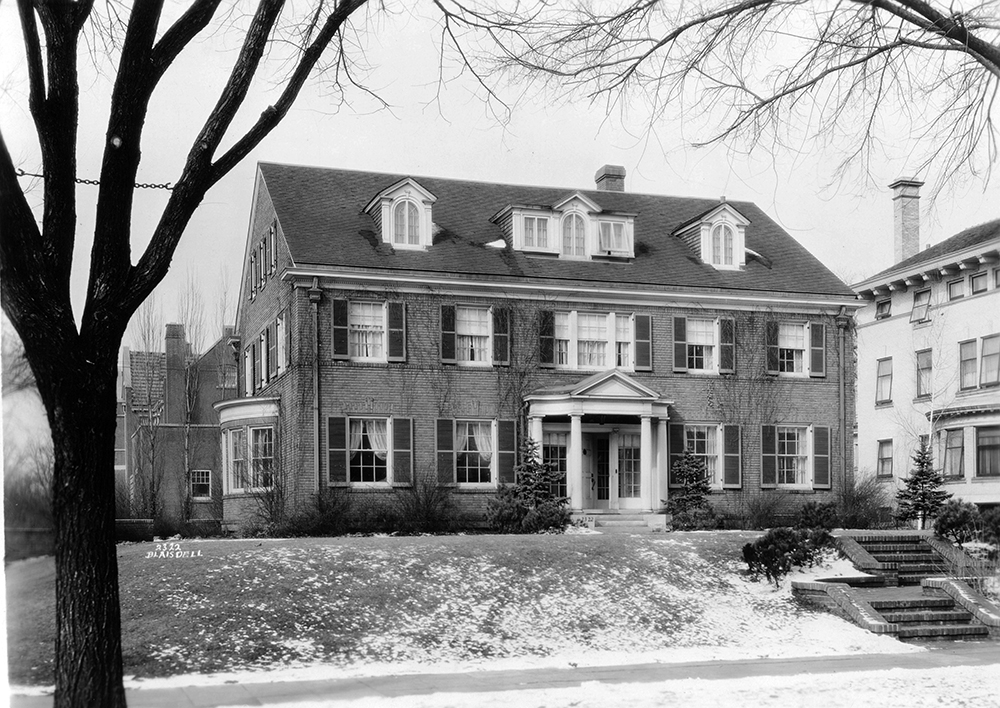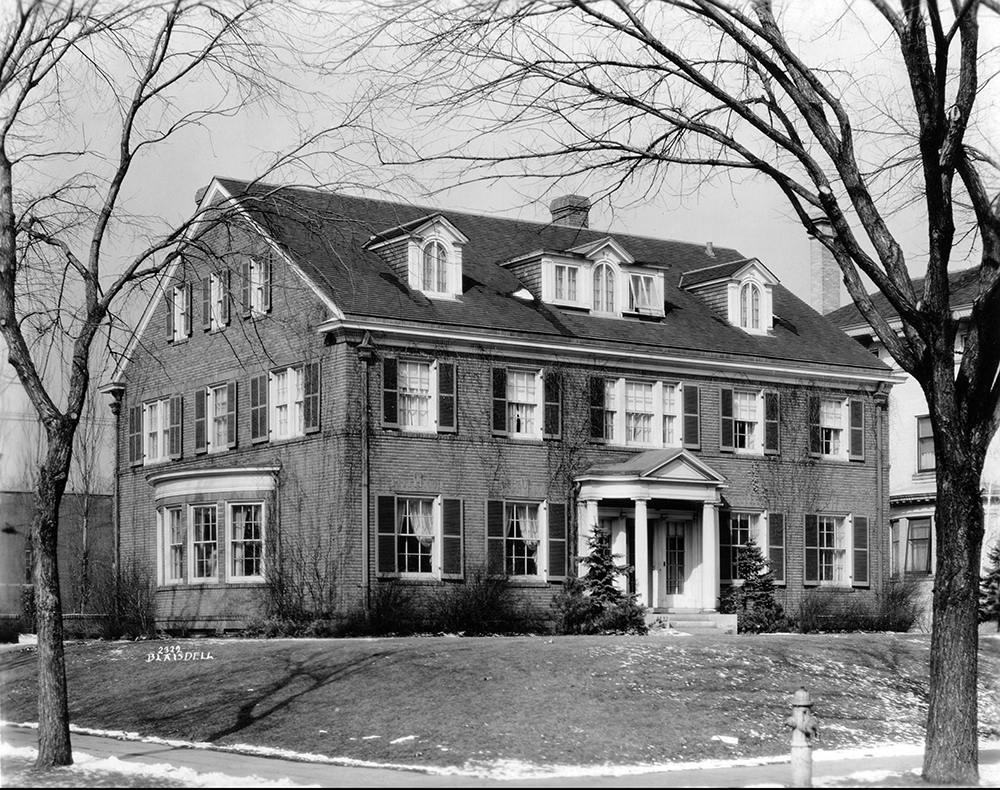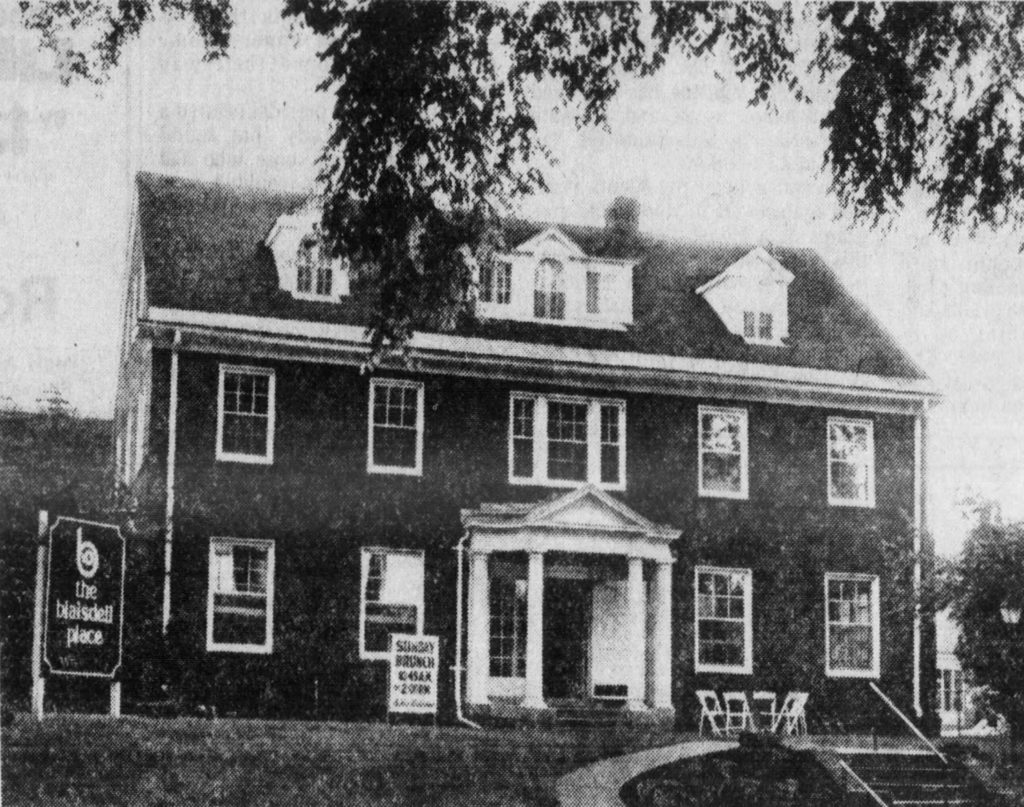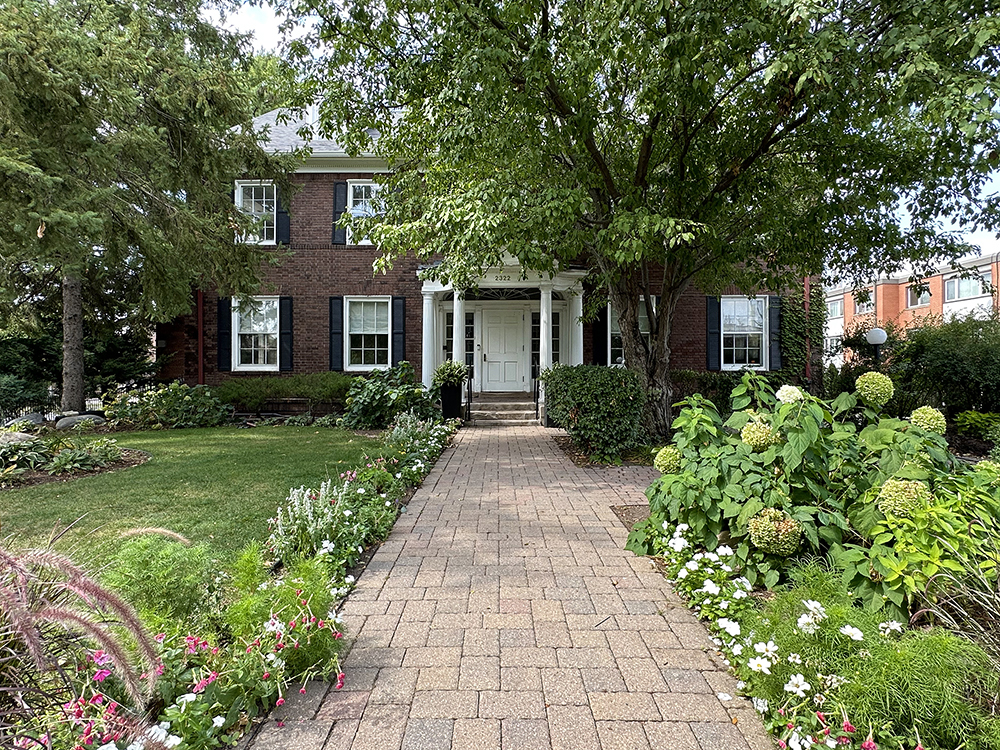Today, The Blaisdell is a wedding and event venue with cozy places to gather with your nearest and dearest on special days. The beautiful venue started out as a private home for two prominent Minneapolis families before being turned into a private club, a restaurant, and then, an event venue. Some claimed that the property was cursed following several years of controversies led to several unsuccessful attempts to reuse the property after the neighborhood was re-zoned by the city in the early 1960s.
A comfortable home for the social elite
The Georgian-style house was built in 1915 for John A. Bovey and family. John was the president of the Bovey-Shute Lumber Company. His family socialized in the same circle as the Pillsburys, Crosbys, Lowrys, and the other well-heeled Minneapolis families.

The Boveys sold the home in November 1923 to the Leigh family. Charles E. Leigh started the Lavoris Chemical Company with business partner William H. Levings in 1902. By the time Charles purchased the house on Blaisdell, the company was successfully marketing Lavoris mouthwash–which you can still buy today. The company claimed that the product’s antiseptic properties cured everything from bad breath and armpit odor to hemorrhoids and gonorrhea.
The Leigh family lived in the house for more than 20 years. They often held family celebrations and charity fundraising events there. Although they weren’t as high on the social ladder as the Boveys, they were still counted among the city’s elite families.
Post-war growing pains
The house was sold to Arthur Koenig around 1945 and then to George and Catherine Windus around 1947. George and Catherine opened the top floor of their home to boarders–usually unmarried professional young women who worked downtown.
In 1950, George and Catherine also began hosting wedding receptions for middle-class newlyweds in their home. For six years, neighbors grew fed up with the additional traffic, parking issues, and constant bustle of their residential neighborhood on weekends.

So, in early 1956, the city attorney stepped in and reminded the Winduses that current zoning only allowed homes in this part of town to be used for residential uses. They asked the family to apply for conditional use permits until the city could investigate whether it would be wise to re-zone the entire neighborhood.
After a pause of several months to sort out the legal issues with the city, the receptions began again with permits for each event. The re-zoning was approved for the neighborhood, and it seemed like George and Catherine could have larger events at the house. They were so hopeful that they added a ballroom to the house to compete with hotels and community ballrooms.
Then, in 1957, everything was put on hold again as a court order filed by Alderman Edward J. Egan was issued to stop the re-zoning process. He was the only one on the city council to vote no on the re-zoning, and his mission was to prevent it from happening at all costs.
Re-zoning brings new opportunities
After two more years of back and forth between the city, neighbors, and the courts, George and Catherine left the home and their ad-hoc wedding reception business in 1959. The re-zoning eventually came through just in time for the Boys Club of Minneapolis to move in.
When it opened in the house in the spring of 1961, the Boys Club was dedicated to combatting juvenile delinquency. The club used the house as its base until 1975. The property eventually became derelict because the organization ignored basic maintenance and repairs. The Boys Club made a run for it rather than shoulder their responsibility to the property.
Of course, the city considered demolition right away. Thankfully, community groups quickly set about documenting the house’s historical significance. It went up for sale and in 1977, and a small group of professional women purchased it. Their vision was a private club for women to network, relax, and learn.
Blaisdell Place Club for Women
A club only for women set the entire community on edge. The Minneapolis Star sent reporter Barbara Flanagan to calm the city’s fears that the club would be home to (dramatic gasp) lesbians or, worse yet, “militant feminists.” The club’s founders assured Star readers that the club was open to all women as a health, recreation, and dining club.
The women raised enough money to complete its first goal of repairing and restoring the house. After that, programming began for members and their guests. Workshops in professional development, finances, health, career advancement, relaxation, and more were held. A professional masseuse was on call, and professional secretaries were available for members. Talks by public figures were held, and there was often live entertainment, gallery shows by artists, and first-rate dining available to members for free and non-members for a fee.

The club struggled to stay afloat. More dues were needed to cover all of the club’s expenses. After filing Chapter 11 and reorganizing its debts, the club opened its reception hall dining space to the public in 1982. The food was exceptional, and Sunday brunches were so popular that reservations were required months in advance.
Despite the success of opening the dining space, the organization was too far in debt to continue. Rumors ran rampant that the club was only for lesbians since its opening, creating fears among professional women of being outed or assumed to be queer if they joined. The founders informed their members that the club would close in 1984.
A place to celebrate life’s special moments
Head chef Jeffry Bies and Irving Balto purchased the property and reopened it as a restaurant and event center. After overcoming a few hurdles, including Balto’s fear that the club’s reputation would attract queer folks, the pair successfully ran the business as a wedding and event venue.

In 1986, the venue changed its name to Blaisdell Manor. Some considered the house cursed because it had seen too many controversies. But the business chugged along without issues for many years. Then, in 2017, new management took over and re-branded the property The Blaisdell. They have made improvements, and the once-prestigious house looks beautiful.
You can see the lovely house at 2322 Blaisdell Avenue in Minneapolis. A recipe for pesto served in the Blaisdell Place dining room can be found over at History Hotdish.
